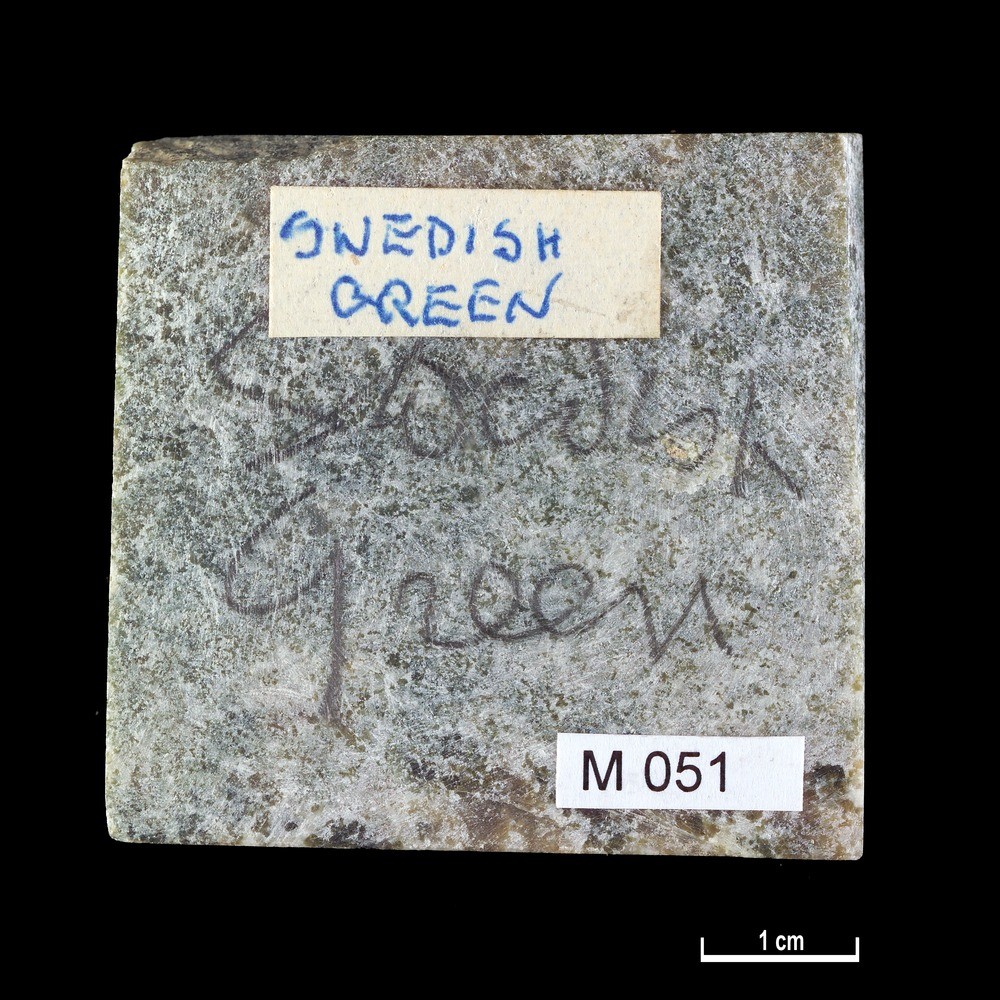| P number: | P576101 |
|---|---|
| Caption: | Marble specimen. Swedish Green. Marmorbruket NY Quarries, Norrkoping, Sweden. |
| Description: |
Label name: Swedish Green. Alternative name: Ringborg Green (NY). Specimen description: Dark green with mottled white, dark and light green veins. Text from: Watson, J. British and foreign marbles and other ornamental stones. Cambridge : University Press, 1916. 434 RINGBORG GREEN (NY). Marmorbruket NY Quarries, Norrkoping. This specimen is an example of the dark variety of Swedish Green Marble. The ground-mass is much darker than those of the two foregoing examples. The veining is also more dislocated, and, this variety may be classed among the Mottled Marbles. The quarry from which it is obtained is known as the NY Quarry, and the marble is similarly distinguished. These three above-mentioned specimens are typical examples of the Variegated Serpentinized Marbles of Sweden, which, besides being extensively employed in that country for decorative work, are freely exported to the British Isles and other European countries for a similar purpose. In England they are generally known commercially as Swedish Green, but they are also sometimes distinguished as Kolmard Marble. The existence of this variety of marble has been known for many years, indeed, so far back as 1650 the quarries are believed to have been worked intermittently; but it was not until the nineteenth century that more active operations were commenced. The colour of these marbles, due to the presence of serpentine, varies from a very light green, with white veins, to quite a dark green tint, with flowered or mottled markings. The quarries are situated about 200 feet above sea level, on the slopes of Bravik Fjord, at the head of which lies the town of Norrkoping. In Stockholm, Swedish Green has been employed for decorative work in many of the public buildings, among w, which may be mentioned the Royal Palace, the Royal wt Opera House, the National Gallery, and the Natural History Museum, built in 1866. It was used for ornamenting the Town Hall, Copenhagen, and the Grand Opera House, Paris (1875). In London it has been employed in the internal decorative work of the Coliseum Theatre, the Strand Palace Hotel (1909), and the South Kensington Post Office (1909). Examples of its use can also be seen in the new Cathedral, Liverpool (1902) ; the Consumption Hospital, Manchester, and the Royal Insurance Co.'s Offices, Lincoln (1906). The pulpit and the altar rails in All Souls' Roman Catholic Church, Peterborough, erected in 1912, are partly composed of Swedish Green. |
| Date taken: | Thu Jan 01 00:00:00 GMT 2004 |
| Photographer: | McIntyre, B.M. |
| Copyright statement: | NERC |
| Additional information: | The marble is from the Walter Brown Collection, Scottish Mineral and Lapidary Club. |
| Orientation: | Square |
| Size: | 328.99 KB; 1000 x 1000 pixels; 85 x 85 mm (print at 300 DPI); 265 x 265 mm (screen at 96 DPI); |
| Average Rating: | Not yet rated |
| Categories: | Unsorted Images |
Reviews
There is currently no feedback

